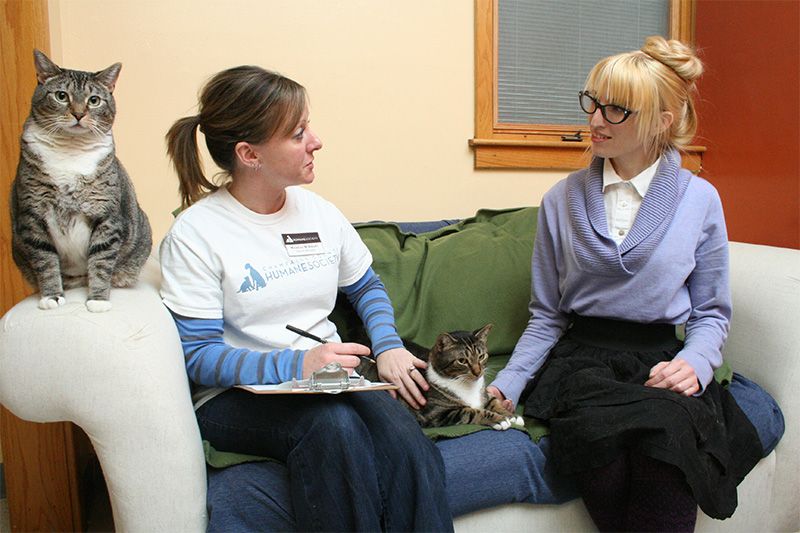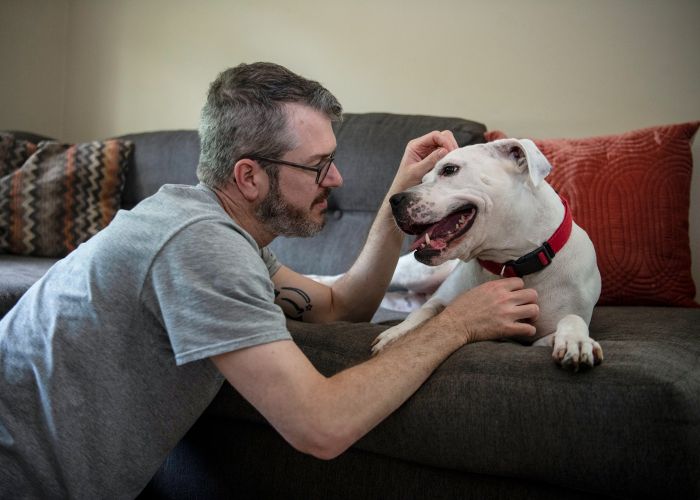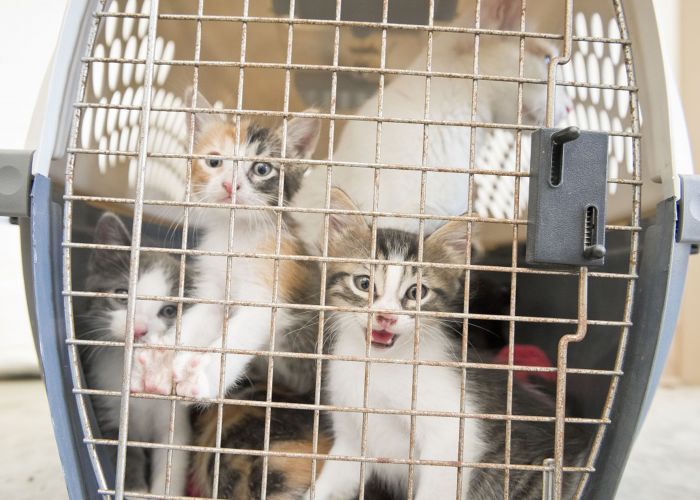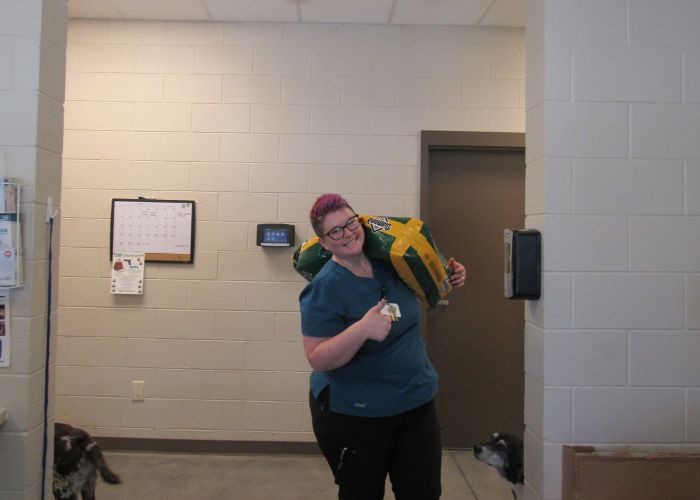Adopters Welcome: The mind-body connection
How organizations and individuals can lay the groundwork for an open adoptions approach

“How can I get my team to take a more open-minded, trusting approach to adoptions?”
It’s a question I often hear from shelter leaders.
There’s no pat answer or one-shot solution, I tell them. Because open adoptions requires more than skills training. We have to dig deeper and understand how the mind and body affect our ability to do this vital work.
Like other helping professionals, animal welfare workers can be profoundly affected by the pain and suffering they witness in their jobs. Over time, vicarious trauma, a result of witnessing work-related trauma over time, can dramatically shift their world view, leading to changes in their beliefs about the goodness and trustworthiness of others, including adopters.
This traumatic stress doesn’t just inhabit their minds, it also gets stored in their bodies and then manifests later as fight, flight or freeze responses and other reactive behaviors, thoughts and sensations.
The central feature of any trauma or stress response is speed and reflexivity. We take in sensory input, then the limbic system and the brain stem (the survival brain) ask one question: Is this dangerous or safe?
Danger can mean a threat to our physical body as well as perceived threats to what we believe or care about—like the animals we feel responsible for.
When we feel challenged or threatened, the survival brain quickly moves to activate the sympathetic nervous system—the body’s fight-or-flight response. Our thinking brain, which is much slower, tries to processes the situation logically but often gets overridden by the speed of the survival brain.
“If you’re consistently understaffed, then your adoption counselors are likely overwhelmed and in survival mode, fueled by stress hormones. That will not be conducive to constructive conversations with adopters.”
—Jessica Dolce
When some piece of information comes through our senses—such as a smell, a voice or a phrase—that reminds us of a previously distressing experience (like an adoption that resulted in an animal being returned or abused), the survival brain perceives danger, and our thinking brain is knocked offline. Typically, this happens outside of our conscious awareness.
This means we can’t access our prefrontal cortex, the thinking brain, which we need in order to feel empathy, check our biases and have constructive conversations with adopters.
Additionally, adoption counselors may be so overwhelmed with the demands of the job that they’re stuck in a chronically activated stress response, and the same thing happens.
Trauma and chronic stress inhibit rational thought, until the survival brain senses safety. That’s why top-down training for open adoptions isn’t enough. We need to work with the body too.
Fortunately, there are things we can do, as organizations and individuals, to combat stress, address trauma and strengthen our ability to make adopters feel welcome.

Organizations can:
- Become informed on vicarious trauma. Trauma-informed organizations proactively address the impact of vicarious trauma on their staff through policies, procedures, practices and programs that mitigate the risk of negative consequences for employees, the organization as a whole and the quality of services delivered. This means proactively addressing staff stress and distress by working to reduce demands on staff and enhancing the support they receive, including assisting staff in increasing their cognitive and behavioral ability to cope with and respond to the demands of adoption counseling.
- Normalize that adoptions can trigger the stress response and train staff on self-regulation skills. Difficulty with open adoptions isn’t an individual shortcoming: It’s a predictable part of this work. Knowing that our adoption counselors may not be able to stop their nervous system from being activated by adopters, we need to equip them with an understanding of the stress response and tools to self-regulate.
- Create the conditions for staff to slow down. Is your organization at functional capacity? Can your staff pause to collect themselves? If you’re consistently understaffed, then your adoption counselors are likely overwhelmed and in survival mode, fueled by stress hormones. That will not be conducive to constructive conversations with adopters. Self-care alone can’t fix this.
- Provide regular, quality supervision. This can include regular debriefings with a veterinary social worker or a supervisor to help staff work through some of the negative experiences they’ve had with past adopters that are currently impacting their work. And it can include staff meetings that address topics related to stress and vicarious trauma. As researcher and best-selling author Brené Brown says, “Leaders must either invest a reasonable amount of time attending to fears and feelings or squander an unreasonable amount of time trying to manage ineffective and unproductive behavior.”
- Cultivate a realistically optimist outlook. Don’t deny the negative, but help your staff notice the positive and focus on what is within their control. We need to intentionally take time to talk about the positive to counterbalance the negativity bias.
- Train staff in zone-of-control thinking. Adoption counselors have almost no control over the outcome of their efforts and even fewer tools to help them cope with that reality. Help them decipher what they have control over, what they can influence and what is beyond their control. Then help them identify positive ways of coping with what is out of their control (such as whether an adoption works out).

Individuals can:
- Pay attention to your body and behavior as you’re talking to a potential adopter. Look for signs that your stress response has been activated, such as increased heart rate, shaking hands, trouble making eye contact, a knot in your stomach, snarky responses, etc.
- Slow down. As soon as you notice you’re activated, stop talking. Stress and trauma are all about speed and knee-jerk reactions. Slow it down. Pause the conversation. You may need to say, “I need to grab some paperwork; I’ll be right back,” or get a drink of water. Take a minute to breathe deeply or to label 25 things you can see and hear in the room. You’re helping your body feel safe and giving your prefrontal cortex the chance to come back online to help you communicate better.
- Fact-check yourself. If you’re still feeling discomfort, ask yourself: “When am I? Is this about the past or the present?” You might also ask yourself: “What exactly am I thinking? How do I know this? Is it a fact? What else is possible?”
- Ask for a second opinion. If you’re still not sure, ask a trusted co-worker or supervisor for their opinion.
- Discharge the accumulated stress. Outside of work, do regular self-care that discharges the stress from your body. Exercise can help complete the stress cycle, so can singing, dancing, art, playing with kids and pets, and talking with a counselor.
- Have compassion for yourself. This is hard. Painful things will happen despite your very best efforts. It’s OK that you’re struggling with this. How can you be a good friend to yourself? What kind of support do you need?






